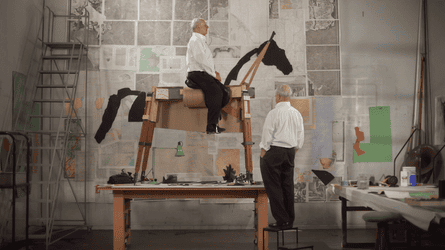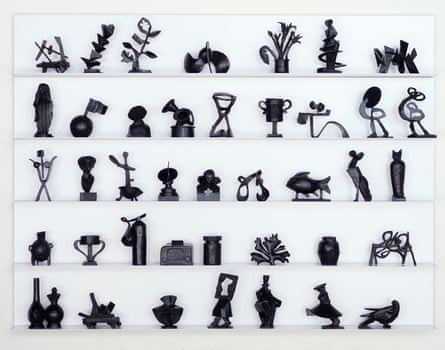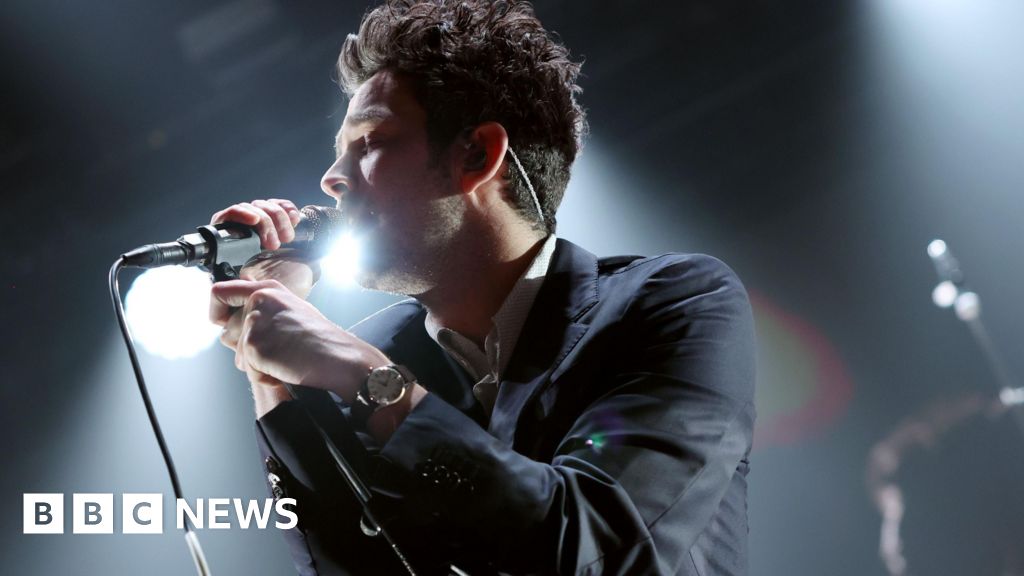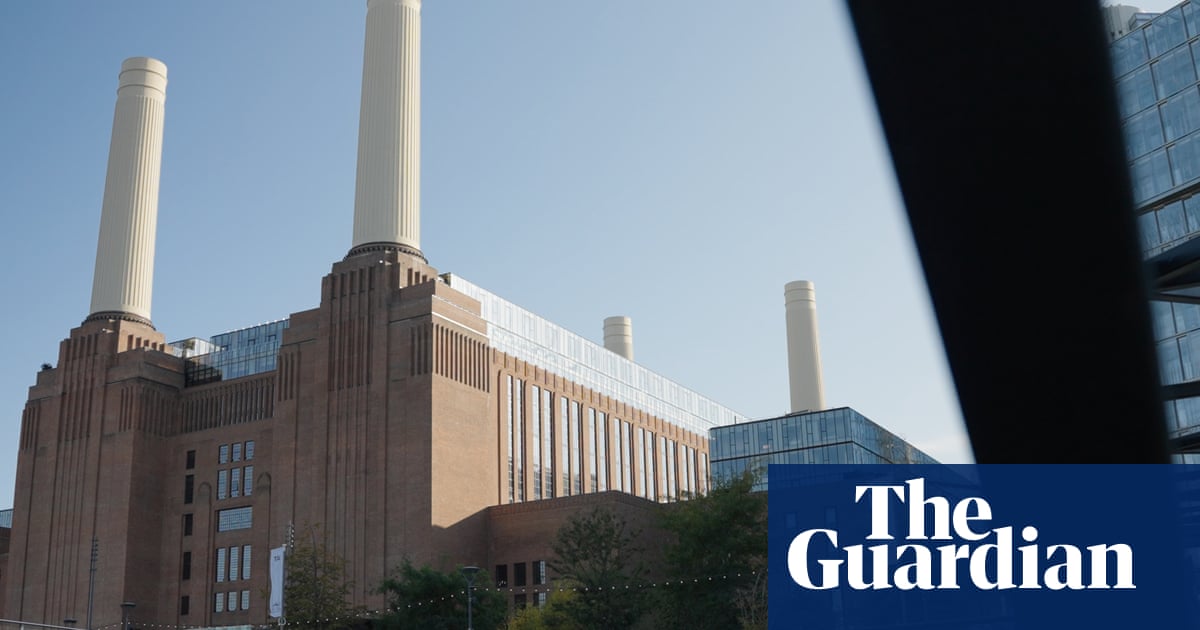How’s this for vanity art: William Kentridge sits astride a horse, like a Roman emperor, his profile beakily aloft as he controls his steed. Except this statue is not as solid as it sounds but a photographic mural of Kentridge in horse-riding pose behind a skeletal wooden horse constructed from parts of artist’s easels with a saddle slung over its cardboard tube of a body. Kentridge mocks himself, and mocks the pretensions of sculpture. Or does he? There’s a confident, showoff brilliance to this illusion and the parallel with a previous great artist is obvious.
Another sculpture, a more solid one, Goat, is a swirling tangle of lines solidified in space, capped with a goat’s head. It’s a homage to Picasso’s 1950 sculpture The She Goat. When you see Picasso’s art it’s not so much one specific work that awes you as the boundless flow of creativity that moves from one style to another in an inexhaustible, playful stream. Kentridge lays claim to that legacy here – and with justification. He is just about the only artist now who can dizzy you in a comparable way with the abundance of his creativity as his impulses dance from drawing to film to collage and back to drawing.
Always drawing. In his 2015 film More Sweetly Play the Dance, reality and drawing magically interweave: a silhouetted procession of real people walk and dance across a blasted landscape to jazz and African music, bearing banners and sculptures that are in fact Kentridge’s drawings. Sketches are borne aloft as if they were flags, while the carriers, too, are partly overdrawn. It’s genius.

More Sweetly Play the Dance, created as an elegy to victims of Ebola, is the kind of collective artwork at which Kentridge excels. This Johannesburg artist makes political art, not so much through declamatory content, as through collaborations with communities of musicians, dancers, actors. He can capture collective tragedies and span modern history. This film’s power is enhanced by being shown across multiple screens, an embracing, constantly moving panorama with sound from repurposed gramophone horns. In the same screening room Oh to Believe in Another World, his animated history of Soviet Russia, becomes an even more menacing farce than when it was recently shown on a single screen with live orchestra on the South Bank.
Kentridge’s film art is, on the whole, much more compelling than his sculptures. On screen he brings it all together, animating his drawings, collages and puppets, using sound as superbly as a conductor, which makes sense. When he was three, Kentridge wanted to be an elephant, but when he was 14, his dream was to lead an orchestra.
Failing in both ambitions, he became an artist. Self-Portrait as a Coffee-Pot tells this autobiographical story in a series of nine films, shown on a large TV screen in a corner of a gallery that re-creates his studio – and it takes all day to see in its entirety. It should be on TV, for it is made in a documentary format with Kentridge as an authoritative “presenter”, speaking in his deep voice and soft accent, in a manner reminiscent of the great television author presenters of the past like Jacob Bronowski or Robert Hughes. Except he keeps being interrupted by his own double.
The technological wizardry that enables Kentridge to debate with himself is so state of the art you see double. Both Kentridges wear his habitual white shirt and speak in the same compelling voice, but they disagree. When Kentridge One reminisces about a childhood picnic when the family ate boiled eggs and sardines on a spread-out newspaper, Kentridge Two begs to differ. “What newspaper was it?” “The Sunday Times.” “Our mother would never have spread out a newspaper for a picnic, and especially not the Sunday Times.”

As they argue, they draw, and the drawings flow exquisitely as he sketches remembered landscapes, self-portraits, still lifes. But as its title implies, this is no straightforward confessional artwork. How can you know who you are if you can’t even agree with yourself about your most treasured memories?
after newsletter promotion
Kentridge’s real identity, the me that matters, is in fact an us. Looking in the mirror to admire his own noble features, in a sequence inspired by the Marx Brothers’ Duck Soup, he instead sees a Black woman looking back at him. While one Kentridge says he is most himself while drawing introspectively, the other claims he is most himself working collaboratively in theatre, opera, you name it. These two facets reveal a subtle soul who moves merrily between private imaginings and public designs.
Movement is the essential thing. Cinema is in every fibre of his being. He shows a series of small bronze sculptures along shelves, and it’s like a film reel. So, is freezing his images as monumental sculpture a folly, like trying to fix a childhood memory in your mind? No. These sculptures are just one more experiment for an artist who is always on the move, always ready to share. At the top of the green hill above the gallery is his huge bronze sculpture of an ampersand (&). Dark and stark, yet funny and warm, the typographical symbol for “and” is a perfect symbol for his art of addition.

 6 hours ago
2
6 hours ago
2










 English (US)
English (US)